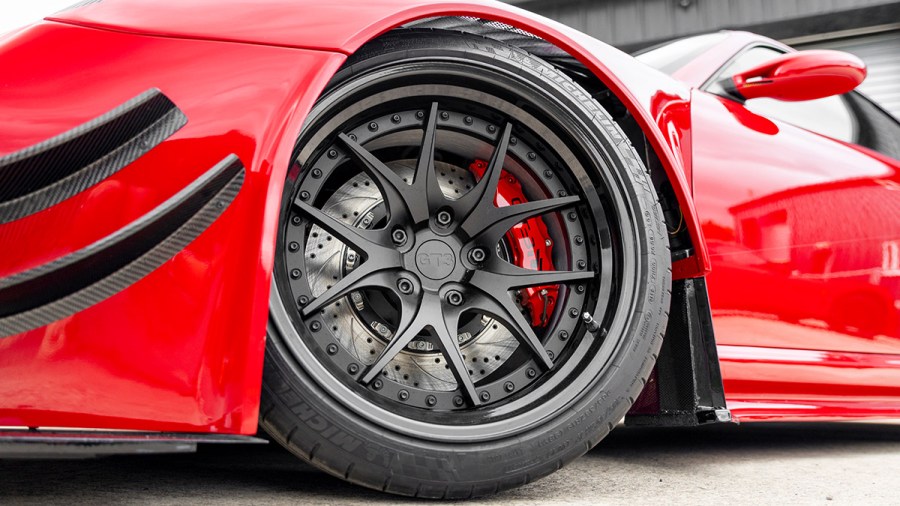As far as engine swaps go, sticking anything other than a Porsche engine inside of a 911 might seem like sacrilege, but this world’s first LS7-swapped widebody 911 says otherwise. Watch the full feature now!
It’s no secret that Porsche has built some fantastic engines over the years. The thought of putting something American under the body of the Porsche 911 is enough to turn anyone’s nose up. But, when you consider the specification of the engine swap involved here, you start to understand why it makes a whole lot of sense. For starters, the LS7 engine is lighter than the standard 911 lump. Some 40kg I might add, too. Power wise, the LS7 wins again, the standard C4S 911 997 (the base car here) has a power output of around 350bhp. The LS7? 500bhp.This particular motor? 660hp. Torque? Well, the standard C4S had less than 300lb ft, this one has more than 500lb ft!
So for those of you sat there wondering why adding two cylinders to a Porsche 911 is a good idea, there you go. In fact, given the weight distribution on a 911 is weighted to the rear thanks to the engine’s placement, having a lighter block helps to balance some of that weight different out. Food for thought.
LS7-swapped Porsche 911 details
While the LS7 engine swap dominates the headlines, it doesn’t take a genius to work out that there’s a whole lot more going on than just the engine. You can start to quickly understand why this was codenamed the “GT3 RR” simply by looking how dramatic it looks. The “RR” here stands for Road & Race.. Wider than anything Porsche has sold, lower, and arguably more aggressive (if you ignore the latest 992 GT3 RS of course). It’s the perfect blend of race car and show vibes, resulting in what could argue is the perfect package.
To get the looks, VAD acquired the last of the 997.2 Porsche 911 GT3 R race kits. Comprised fully of carbon fibre, it widens the car to just over 2m at the rear, which in turn presented some build issues. The first was the fact that despite it being the wider C4S model from factory, the bushes and the control arms couldn’t cope with the extra width. As a result, the team had to custom fabricate new bushes and arms in order for it to fit. Adding in spacers and whopping 10.5x19inch wheels at the front and 13×19 inch wheels at the rear to fill the arches! For those doing the maths, that’s 265/35 19″ tyres at the front and a bonkers 345/30 19″ inch wheels at the rear.

The bodykit itself comprises of the front splitter and fenders, sideskirts, rear 1/4 panels, rear bumper, splitter and engine cover. As mentioned, it’s all carbon fibre, but the team at VAD decided to paint the bodywork in the famous Porsche Carmine Red. Yep, that’s my favourite Porsche colour, too. On the suspension side of things, the team adopted the GT3 setup and coupled it with rose joints for improved handling and response.


LS7 engine spec
OK, I did just say it’s not all just about the engine, but truth be told, it sort of is. I reeled off the stock LS7 engine specs at the beginning of this piece. What I didn’t mention, however, was that this motor is far from stock. It now produces a quite silly 660hp, and it’s all thanks to a whole host of custom parts. No, an LS7 motor doesn’t just slip into a Porsche 911 and Bob’s your Uncle.
Funnily enough, Porsche didn’t design the rear of the 911 to accept a donation from an American muscle car. In fact, almost everything about the engine, bar the aluminium block, is custom. That includes pistons, conrods, fuel rails, water and fuel system. It of course needed custom engine mounts for it to be secured, and no off the shelf exhaust system was ever going to do the job. Again, custom made but making use of a modified LS7 manifold coupled with sports cats to keep things legal. SMART thinking.
Check out this bonkers LS7-swapped Porsche 911 at Trax and German Car Festival.





